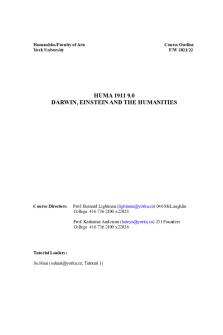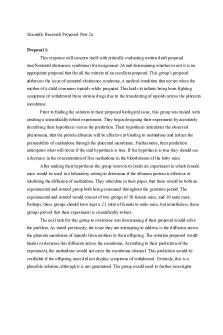EDU40011 Teaching the Humanities - Assignment 2A Folio Part A - 8th September 2021 PDF

| Title | EDU40011 Teaching the Humanities - Assignment 2A Folio Part A - 8th September 2021 |
|---|---|
| Author | Robyn Lindau |
| Course | Teaching The Humanities |
| Institution | Swinburne Online |
| Pages | 10 |
| File Size | 212.7 KB |
| File Type | |
| Total Downloads | 51 |
| Total Views | 159 |
Summary
teaching the Humanities Assignment 2 foliothat are Children hurried through childhood increasingly feel more stressed than those that are not hurried. Stress has shown to hinder a child’s ability to absorb knowledge and threatens the quality of teachers teaching that hurried child (Elkind, 2007). St...
Description
102672731 | Robyn Lindau | EDU40011 Teaching the Humanities | Assignment 2A: Folio Part A | 8th September 2021
EDU40011: Teaching the Humanities Assignment 2A Folio Part A
Robyn Lindau | 102672731 Word count | 1084 Due date | 8th September 2021 eLA | Matt Faulkner
102672731 | Robyn Lindau | EDU40011 Teaching the Humanities | Assignment 2A: Folio Part A | 8th September 2021
1.Resources Discipline Area
Year Level
History
Year 2
Inquiry Question/Curriculum Focus
Resource Name and Link
Key Question: 1. Book: My Place (Wheatley & Rawlins, 2008)
What remains of the past are important to the local community? Why?
Content Descriptors:
Geography
Year 3
The history of a significant person, building, site and/or part of the natural environment in the local community and what it reveals about the past (ACHASSK044)
2. Website: Early Photographs; indigenous Victorians (Victorian Collections, 2021) The importance today of https://victoriancollections.net.au/stories/earlya historical site of cultural photographs-indigenous-victorians or spiritual significance in the local area, and why it should be preserved (ACHASSK04 5)
Key Question:
How and why are places similar and different?
1. Video: Australia Facts - Cool, Fun Facts about Down Under (Cool Facts, 2017) https://www.youtube.com/watch? v=hJm7kLzEmdE
Content Descriptors:
The representation of Australia as states and territories and as Countries/Places of Aboriginal and Torres Strait Islander Peoples; and major places in Australia, both natural and human (ACHASSK066) The main climate types
2. Website - How does your garden grow? (NSW Government, n.d) https://schoolsequella.det.nsw.edu.au/file/47f6a0a b-7c0b-4874-b50d-f2ed4a237029/1/how-doesyour-garden-grow.zip/index.htm
102672731 | Robyn Lindau | EDU40011 Teaching the Humanities | Assignment 2A: Folio Part A | 8th September 2021
Economics
Year 5
of the world and the similarities and differences between the climates of different places (ACHASSK068) Key Question:
Why do I have to make choices as a consumer?
1.DigiActivity (moneysmart.gov.au, n.d) Our big weekend adventure
Content Descriptors:
Civics and Citizenship
Year 6
Influences on consumer choices and methods that can be used to help make informed personal consumer and financial choices (ACHASSK121)
2.Video (Ellen MacArthur Foundation, 2011) https://www.youtube.com/watch? v=zCRKvDyyHmI&t=3s
Types of resources (natural, human, capital) and the ways societies use them to satisfy the needs and wants of present and future generations (ACHASSK1 20)
Key Question:
What are the roles and responsibilities of the different levels of government in Australia?
1.Website: Passing A Bill – Animation (Parliament of New South Wales, n.d) https://education.parliament.nsw.gov.au/teacherlesson/passing-a-bill-animation/
Content Descriptors:
The responsibilities of electors and representatives in Australia’s democracy (A CHASSK145)
The roles and responsibilities of
2.Interactive Game (Parliamentary Education Office, 2021) https://peo.gov.au/understand-ourparliament/how-parliament-works/three-levels-ofgovernment/federal-state-and-local/
102672731 | Robyn Lindau | EDU40011 Teaching the Humanities | Assignment 2A: Folio Part A | 8th September 2021
Australia’s three levels of government (ACHASSK1 44)
2.Evaluation History The book My Place by Wheatly and Rawlins (2008) can be used to introduce the inquiry question, what remains of the past are important to the local community? Why? The class can discuss how things have changed and what has stayed the same and how it effects the community. (Gilbert, Tudball, & Brett, 2020) The teacher can draw examples from the book such as the big tree or canal. Challenges that might occur with this book are that it is quite long. Some children might struggle to stay engaged for the entire book. To keep it shorter the teacher can skip every other page, only highlining the important timelines. This resource is relevant to year 2 as it directly links to the content descriptor ‘The history of a significant person, building, site and/or part of the natural environment in the local community and what it reveals about the past (ACHASSK044)’ (Australian Curriculum, Assessment and Reporting Authority [ACARA]. (2018). The achievement standard can also be addressed through identifying how and why the lives of people have changed over time while others have remained the same (ACARA, 2018).
While engaging with the book students will learn about different people across a timeline. Through the timeline and use of visuals, students begin to think historically about their community, connecting the natural and built environments.
Geography
102672731 | Robyn Lindau | EDU40011 Teaching the Humanities | Assignment 2A: Folio Part A | 8th September 2021
The video of Australian facts is used to engage students in an interesting way (Tan, & Pearce, 2012) and to teach students about Australia. The teacher can use it to encourage children to discuss what makes Australia different. The class can then compare similarities and differences within Australia. Challenges are that the language used in the video is American English. Some language might be unfamiliar and need explanation. Temperatures would also need to be converted. This resource links to the content descriptor ‘The representation of Australia as states and territories and as Countries/Places of Aboriginal and Torres Strait Islander Peoples; and major places in Australia, both natural and human (ACHASSK066)’ (ACARA, 2018). Students are introduced to the countries states, different terrains, iconic landmarks both natural and man-made, and the different culture, language and people that make up Australia. Through analysis and questioning, students are learning to compare similarities and differences about their country while becoming geographical thinkers (Australian Academy of Science, 2018).
Economics Students will work in pairs to complete the Digi Activity game. Students are learning to budget and critically think about how they spend money in a collaborative and cooperative way. The teacher is open to teachable moments as they observe the class complete the activity in pairs (Buchanan, 2013). A challenge with this resource could be that some pairs might finish the activity faster than others. To minimise students waiting for others to finish, the teacher can set up a new task or swap pairs and get them to repeat the exercise.
102672731 | Robyn Lindau | EDU40011 Teaching the Humanities | Assignment 2A: Folio Part A | 8th September 2021
As students analyse and think about what they are spending on, this resource corelates with the inquiry question ‘why do I have to make choices as a consumer?’ (ACARA, 2018). It is also relevant in that it directly links to the content descriptor ‘Influences on consumer choices and methods that can be used to help make informed personal consumer and financial choices (ACHASSK121)’ (ACARA, 2018).
While engaged in the Digi Activity students learn about their consumer choices and will start to critically think about their wants vs needs. Students learn to work collaboratively and solve problems together.
Civics and Citizenship
This website resource is used to introduce the different levels of government. First the teacher will play the video on the website. The teacher will use this resource in a challenged-based learning activity. Students will engage in the website. Then investigate further research on the website and lastly they act by working in groups to create a new bill (Gilbert, Tudball, & Brett, 2020). Challenges using this resource could be that the video and website uses language that might be new to students. The teacher can help this by discussing some on the language used before the start of the activity.
This resource is relevant to year 6 as it directly teachers students about parliament, the role of representatives and electors. This links to content descriptor ‘The responsibilities of electors and representative in Australia’s democracy (ACHASSK145)’ (ACARA, 2018). While engaged in the website, students are learning about Australia’s democracy and how passing a bill works. They learn about the different roles of leaders and the responsibilities of governments. This helps children become proud and active citizens (Mellor, 2010).
102672731 | Robyn Lindau | EDU40011 Teaching the Humanities | Assignment 2A: Folio Part A | 8th September 2021
102672731 | Robyn Lindau | EDU40011 Teaching the Humanities | Assignment 2A: Folio Part A | 8th September 2021
Reference:
Australian Academy of Science. (2018). Geography: Shaping Australia's future. Retrieved from http://www.agta.asn.au/files/Resources/2019/03_19/geography-decadal-plan.pdf
Australian Curriculum, Assessment and Reporting Authority [ACARA]. (2018). Australian Curriculum: F-10 curriculum: Humanities and Social Sciences: Introduction v.8.4. Retrieved from https://www.australiancurriculum.edu.au/f-10curriculum/humanities-and-social-sciences/
Buchanan, J. (2013). History, geography and civics: Teaching and learning in the primary years. Port Melbourne, VIC: Cambridge University Press.
Cool Facts, (2017). Australia Facts - Cool, Fun Facts about Down Under [video]. YouTube. Retrieved from https://www.youtube.com/watch?v=hJm7kLzEmdE
Ellen MacArthur Foundation, (2011). Explaining the Circular Economy and How Society Can Re-think Progress | Animated Video Essay [video]. YouTube. Retrieved from https://www.youtube.com/watch?v=zCRKvDyyHmI&t=3s
Gilbert, R., Tudball, L. & Brett, P. (Eds.) (2020). Teaching Humanities and Social Sciences: Teaching and Learning across Australia (7th ed.). South Melbourne, VIC: Cengage Learning.
Mellor, S. (2010). Insights from formal testing of civics and citizenship learning in Australia. Ingenta Connect. Retrieved from
102672731 | Robyn Lindau | EDU40011 Teaching the Humanities | Assignment 2A: Folio Part A | 8th September 2021
https://www.ingentaconnect.com/content/intellect/ctl/2010/00000006/00000001/art00 003
Moneysmart Network, (n.d). Our Big Weekend Adventure [DigiActivity]. Retrieved from https://moneysmart.gov.au/teaching/teaching-resources/our-big-weekendadventure?utm_source=teachingresource&utm_medium=download&utm_campaign=unit-of-work
NSW Government, (n.d). How does your garden grow?. NSW Government Education Public Schools. Retrieved from https://schoolsequella.det.nsw.edu.au/file/47f6a0ab7c0b-4874-b50d-f2ed4a237029/1/how-does-your-garden-grow.zip/index.htm
Parliamentary Education Office, (2021). Federal, State and Local. Three Levels of Government. Retrieved from https://peo.gov.au/understand-our-parliament/howparliament-works/three-levels-of-government/federal-state-and-local/
Parliament of New South Wales, (n.d). Passing A Bill – Animation. Retrieved from https://education.parliament.nsw.gov.au/teacher-lesson/passing-a-bill-animation/
Tan, E., & Pearce, N. (2012). Open education videos in the classroom: exploring the opportunities and barriers to the use of YouTube in teaching introductory sociology. Research in Learning Technology, 19. Retrieved from https://journal.alt.ac.uk/index.php/rlt/article/view/723
Victorian Collection. (2021). Early Photographs; indigenous Victorians. State Library Victoria, State Library of Victoria. Retrieved from https://victoriancollections.net.au/stories/early-photographs-indigenous-victorians
102672731 | Robyn Lindau | EDU40011 Teaching the Humanities | Assignment 2A: Folio Part A | 8th September 2021
Wheatley, N., & Rawlins, D. (2008). My Place. Walker Books Australia...
Similar Free PDFs

The Hindu Review September 2021
- 50 Pages

Assignment 2a - Market Research
- 8 Pages

ATS September 2021 Exams
- 3 Pages

E-folio A Semiotica
- 4 Pages

Bio Assignment 2A
- 3 Pages

MKT 10007 Assignment 2A
- 16 Pages

CREM+ Report+FOR+ September+2021
- 12 Pages

Humanities 1911 Syllabus 2021-2022
- 12 Pages

Major Assignment Part A - PICO
- 8 Pages

BSD110 TP2 Part A Assignment
- 5 Pages
Popular Institutions
- Tinajero National High School - Annex
- Politeknik Caltex Riau
- Yokohama City University
- SGT University
- University of Al-Qadisiyah
- Divine Word College of Vigan
- Techniek College Rotterdam
- Universidade de Santiago
- Universiti Teknologi MARA Cawangan Johor Kampus Pasir Gudang
- Poltekkes Kemenkes Yogyakarta
- Baguio City National High School
- Colegio san marcos
- preparatoria uno
- Centro de Bachillerato Tecnológico Industrial y de Servicios No. 107
- Dalian Maritime University
- Quang Trung Secondary School
- Colegio Tecnológico en Informática
- Corporación Regional de Educación Superior
- Grupo CEDVA
- Dar Al Uloom University
- Centro de Estudios Preuniversitarios de la Universidad Nacional de Ingeniería
- 上智大学
- Aakash International School, Nuna Majara
- San Felipe Neri Catholic School
- Kang Chiao International School - New Taipei City
- Misamis Occidental National High School
- Institución Educativa Escuela Normal Juan Ladrilleros
- Kolehiyo ng Pantukan
- Batanes State College
- Instituto Continental
- Sekolah Menengah Kejuruan Kesehatan Kaltara (Tarakan)
- Colegio de La Inmaculada Concepcion - Cebu





